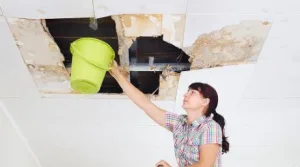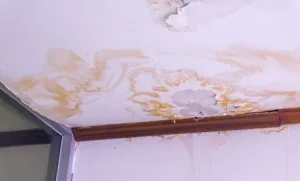Expert Water Damage Repair Solutions to Prevent Mold, Rot, and Costly Future Repairs
Introduction: Why Timely Water Damage Repair Matters
Water damage isn’t just an eyesore — it’s a structural hazard. Whether triggered by burst pipes, storms, or unnoticed leaks, water damage repair is critical to safeguarding property value and ensuring occupant safety. Without immediate intervention, even minor water intrusion can lead to mold growth, wood rot, and severe structural compromise.
In this comprehensive guide, we explore how professional water damage repair services mitigate risks and prevent long-term complications, saving homeowners and businesses thousands in future repairs.

Understanding the Common Causes of Water Damage
1. Plumbing Failures and Burst Pipes
Leaking or burst pipes are one of the leading causes of water damage in residential and commercial properties. Temperature fluctuations, corrosion, and old pipe materials often lead to such failures. A report from the Insurance Information Institute highlights that water damage accounts for nearly 23% of all homeowner insurance losses in the U.S.
2. Storm Damage and Flooding
Severe weather events such as hurricanes, flash floods, or heavy rainfall can overwhelm drainage systems and cause extensive flooding. Without proper storm damage prevention measures, water can easily infiltrate basements, foundations, and crawlspaces.
3. Faulty Appliances and HVAC Systems
Aging water heaters, malfunctioning dishwashers, or AC condensation lines can release large volumes of water into living spaces. Regular maintenance is essential to avoid sudden failures.
The Hidden Dangers of Delayed Water Damage Repair
Mold and Mildew Proliferation
Mold can begin growing within 24 to 48 hours of water exposure. It spreads rapidly and poses serious health risks, particularly for individuals with respiratory conditions. According to the Centers for Disease Control and Prevention, exposure to mold can lead to eye irritation, coughing, and even asthma attacks.
Structural Decay and Wood Rot
Waterlogged wood weakens over time, leading to rot and sagging in walls, floors, and ceilings. This can severely compromise the building’s structural integrity, often requiring expensive reconstruction.
Electrical Hazards
Water can reach electrical systems and outlets, creating a serious fire risk. Delayed repairs increase the likelihood of short circuits or electrocution.
Professional Water Damage Repair Process: Step-by-Step
1. Thorough Inspection and Assessment
Certified technicians utilize advanced tools, including moisture meters, infrared cameras, and hygrometers, to detect hidden water and accurately map the full extent of the damage.
2. Water Extraction and Drying
High-capacity pumps and industrial-grade dehumidifiers are used to eliminate standing water and moisture. This process ensures complete drying of structural components and hidden cavities.
3. Mold Remediation and Sanitization
In suspected or confirmed mold cases, professionals implement HEPA filtration and antimicrobial treatments to eliminate spores and prevent regrowth.
4. Structural Repairs and Restoration
This phase involves replacing damaged drywall, flooring, insulation, or even foundational materials. Restoration aims to return the property to its pre-loss condition.
Key Benefits of Hiring a Certified Water Damage Repair Company
24/7 Emergency Response
Reputable companies offer round-the-clock service, ensuring that response teams can mitigate damage before it spreads and causes further harm.
Insurance Claim Assistance
Professionals assist in documenting damages, which simplifies the insurance claim process and helps maximize reimbursements.
Advanced Equipment and Trained Staff
Certified firms follow IICRC standards and utilize cutting-edge drying technologies, ensuring efficient and safe restoration.
How to Prevent Water Damage Before It Starts
Install Leak Detection Devices
Smart leak detectors can alert homeowners to the presence of moisture in high-risk areas, such as laundry rooms or under sinks.
Routine Inspections
Have your roof, plumbing, and HVAC systems inspected annually to detect signs of wear and potential leakage.
Maintain Proper Drainage
Ensure gutters and downspouts are clear of debris and direct water away from the foundation to reduce seepage risk.
Cost of Water Damage Repair: What to Expect
Repair costs can vary significantly depending on the extent of the damage:
| Damage Type | Average Cost Range |
| Minor Leak Repair | $150 – $500 |
| Mold Remediation | $500 – $6,000+ |
| Structural Drying | $1,000 – $4,000 |
| Full Restoration | $5,000 – $30,000+ |
Note: These are averages, and actual costs may vary based on location, insurance coverage, and materials used.
Choosing the Right Water Damage Repair Company
When selecting a service provider, consider the following:
- Certifications: Ensure they’re IICRC-certified.
- Response Time: Fast response limits damage.
- Transparent Pricing: Avoid providers with vague estimates.
Why DIY Water Damage Repair Can Be Risky
While minor spills can be addressed with household tools, serious water damage should never be a DIY project. Common pitfalls include:
- Incomplete drying leads to mold
- Electrical hazards during cleanup
- Missed structural issues behind walls or under floors
Professional intervention is crucial to ensure long-term safety and cost-effectiveness.

Conclusion: Protect Your Property and Your Peace of Mind
Water damage is more than just a temporary nuisance — it’s a gateway to mold, rot, and costly repairs. Acting quickly and relying on professional water damage repair experts is the smartest way to safeguard your property. With timely intervention, proactive prevention, and expert restoration, you can protect your investment and restore peace of mind.
